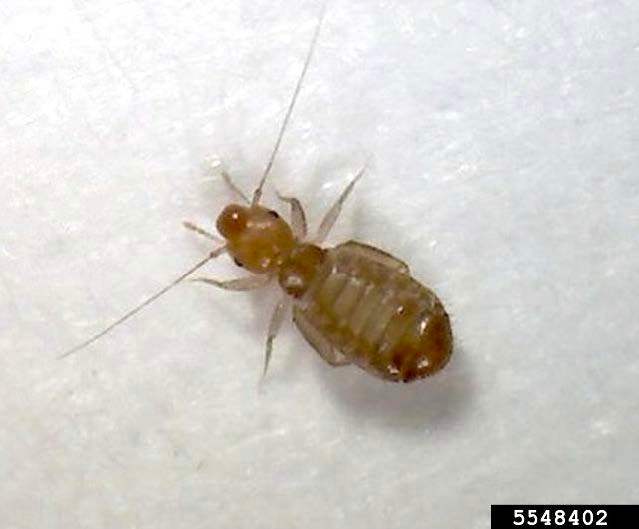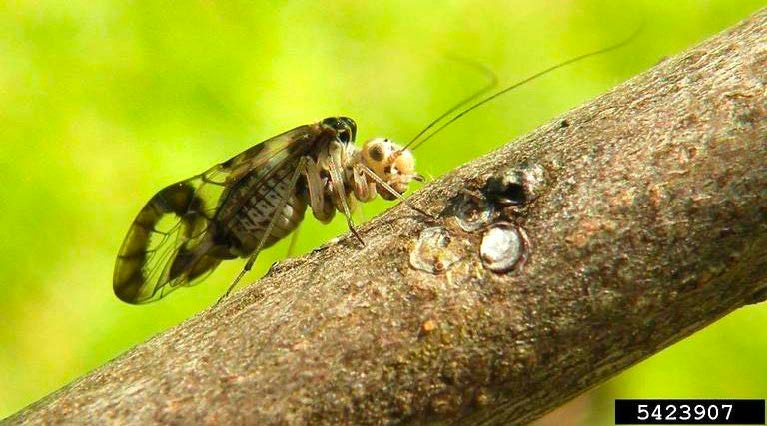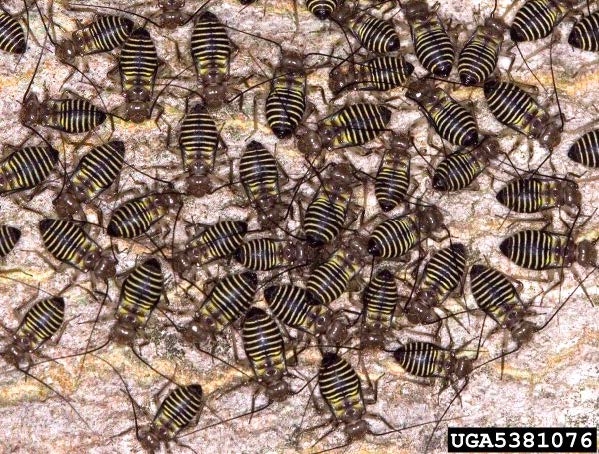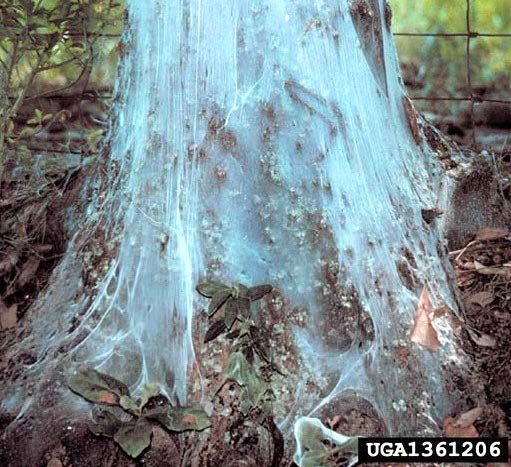Psocids: Barklice and Booklice
ID
ENTO-143NP (ENTO-440NP)
Description
Psocids are small, oval insects with soft bodies that usually measure only several millimeters long. Psocids generally occur in shades of brown, black, or pale colors; some have distinctive mottled or striped markings. They have long, thin legs and antennae, a somewhat bulbous head with prominent eyes, and the thorax may appear “humpbacked” (Fig. 1). In general, adults have membranous wings that are held over the body in a tented position (Fig. 2), but in some species the adults remain wingless or have very small wings.

Despite having “lice” in their common name, bark lice and book lice are not are not parasitic and do not harm plants, animals, or people. Pscocids graze on mold, yeasts, algae, fungi, and decaying plant matter with their chewing mouthparts. Psocids do well in areas with high humidity that support the growth of their food.

Life Cycle
Psocids have an incomplete lifecycle of egg, nymphal, and adult stages. Nymphs largely resemble the adults, but they must grow and molt multiple times before reaching the adult stage. A few species give live birth to their young.
Damage
Psocids found on trees are called barklice. Homeowners may be alarmed by large numbers of barklice on the trunk and branches of their trees (Fig. 3). Some psocids live in a large communal group that may sway in a synchronous movement when disturbed. Other species live under silk webbing that they spin from their mouths. They feed on fungi and decaying plant matter under the protection of thick silk sheets on the trunk and branches. The webbing may be highly noticeable, but it is fragile and will deteriorate on its own (Fig. 4). No control measures are necessary for any species of barklice as they pose no harm to the tree itself.
Some psocids can be pests of stored grain products. They reduce food quality by feeding and contaminating pantry goods, but the accidental consumption of psocids is unlikely to be a medical concern. Psocids feeding on the starches found in books, paper goods, fabric, and similar materials are called booklice. They can damage these items over time and are pests in museums and libraries. Indoor infestations of psocids indicate a problem with high moisture levels and a lack of air circulation.


Habitat and Distribution
Psocids are found wherever temperature and humidity levels support the growth of their food. Outdoors they are found on tree trunks and branches, in dead foliage, under bark, and on rock outcrops. Indoors they are found among undisturbed books, papers, and cardboard boxes, as well as in stored grain products in the pantry.
Control
Pscocids infesting stored pantry products can be controlled by sanitary measures. In general, keep grain products dry and in sealed containers to prevent contamination by psocids and to limit their spread. If an infestation of psocids is found, remove all items from the infested location and thoroughly clean the shelves. Infested products can be thrown away or salvaged. Salvage them by baking in an oven for 30 minutes at 350°F, or by storing them in a deep freezer for 4 days at 0°F. Once the products are treated by heat or cold, place them in containers with a tight sealing lid.
Barklice do not cause any damage to trees and do not require any control measures, even if there are large numbers of psocids and heavy webbing on the trees. Infestations of books and paper goods signal a problem with indoor moisture levels. Reducing humidity levels and increasing air flow will help reduce populations of booklice.
Note
The parasitic lice (the Phthiraptera) have recently been placed within the Order Psocodea along with the barklice and booklice. Parasitic lice do not infest plants or stored products. For information about lice on humans, see Virginia Cooperative Extension factsheets on body lice and crab lice.
Revised
Theresa A. Dellinger, January 25, 2021.
Virginia Cooperative Extension materials are available for public use, reprint, or citation without further permission, provided the use includes credit to the author and to Virginia Cooperative Extension, Virginia Tech, and Virginia State University.
Virginia Cooperative Extension is a partnership of Virginia Tech, Virginia State University, the U.S. Department of Agriculture (USDA), and local governments, and is an equal opportunity employer. For the full non-discrimination statement, please visit ext.vt.edu/accessibility.
Publication Date
March 5, 2021



